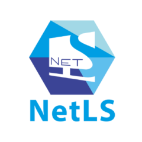Apr 11, 2024
No image

Ongoing
Implementation Of AI/ML Scoring System in FinTech
$25,000+
more 1 year
United States
6-9
Service categories
Service Lines
Artificial Intelligence
Big Data
Software Development
IT Services
QA and Testing
Domain focus
Banking & Financial Services
Other
Programming language
Python
Frameworks
.NET
Subcategories
IT Services
Outsourcing
Challenge
Our client is a financial company that specializes in providing financing to small and medium-sized businesses in the US. The client approached us to improve the underwriting process by integrating various third-party applications to collect and validate data, and further implement machine learning (ML) tools.
Because manual underwriting is a rather time-consuming process, several employees usually work on processing applications simultaneously.
Parallel processing reduces audit accuracy due to the usual human factor. The probability of error and loan default increases, but at the same time, the cost of the entire process increases due to the high cost of human labor. In summary, time, price, and poor quality were the main challenges to success.
Our client is a financial company that specializes in providing financing to small and medium-sized businesses in the US. The client approached us to improve the underwriting process by integrating various third-party applications to collect and validate data, and further implement machine learning (ML) tools.
Because manual underwriting is a rather time-consuming process, several employees usually work on processing applications simultaneously.
Parallel processing reduces audit accuracy due to the usual human factor. The probability of error and loan default increases, but at the same time, the cost of the entire process increases due to the high cost of human labor. In summary, time, price, and poor quality were the main challenges to success.
Solution
The development team had a task to create an automated system that could efficiently collect, process, and validate data from many third-party services, assess the risks associated with loan applications, and offer informed decisions based on the information received. The expectation was for accuracy, reliability, efficiency, and independence.
The development team had a task to create an automated system that could efficiently collect, process, and validate data from many third-party services, assess the risks associated with loan applications, and offer informed decisions based on the information received. The expectation was for accuracy, reliability, efficiency, and independence.
Results
The ETL platform allowed our client to reduce costs by 55.5% compared to the classical method of integrating services. The introduction of artificial intelligence and machine learning technologies in credit analysis has improved the determination of the optimal default risk rating based on a wide range of data. Also, thanks to this solution, the total number of applications processed in 1 month increased by 144% over two years, the cost of operating expenses per application decreased by 47%, and the credit default rate decreased significantly. Due to the implementation of these technologies in our customer's business, we managed to reduce the client default rate from 24% to 14%, which is within the range of the norm in the North American financial industry.
The ETL platform allowed our client to reduce costs by 55.5% compared to the classical method of integrating services. The introduction of artificial intelligence and machine learning technologies in credit analysis has improved the determination of the optimal default risk rating based on a wide range of data. Also, thanks to this solution, the total number of applications processed in 1 month increased by 144% over two years, the cost of operating expenses per application decreased by 47%, and the credit default rate decreased significantly. Due to the implementation of these technologies in our customer's business, we managed to reduce the client default rate from 24% to 14%, which is within the range of the norm in the North American financial industry.
